Click on an image for detailed information
Click on a column heading to sort in ascending or descending order

My
List |
Addition Date
|
Target
|
Mission
|
Instrument
|
Size
|

|
1999-05-21 |
Io
|
Hubble Space Telescope
|
WFPC2
|
3000x1930x3 |
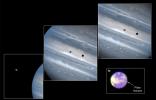
|
-
PIA01540:
-
Hubble Clicks Images of Io Sweeping Across Jupiter
Full Resolution:
TIFF
(6.217 MB)
JPEG
(285.7 kB)
|

|
2000-05-18 |
Io
|
Galileo
|
Photopolarimeter-Radiometer
|
710x746x3 |

|
-
PIA02546:
-
Sulfur Gas in Pele's Plume
Full Resolution:
TIFF
(544.7 kB)
JPEG
(42.15 kB)
|

|
2000-05-18 |
Io
|
Galileo
|
Photopolarimeter-Radiometer
|
1225x827x3 |

|
-
PIA02547:
-
The Role of Sulfur in Io's Volcanoes
Full Resolution:
TIFF
(1.611 MB)
JPEG
(75.39 kB)
|

|
2000-05-18 |
Io
|
Galileo
|
Near Infrared Mapping Spectrometer
|
661x556x3 |
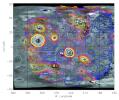
|
-
PIA02548:
-
Temperature Map of Io's Night Side
Full Resolution:
TIFF
(924.6 kB)
JPEG
(82.66 kB)
|

|
2000-05-18 |
Io
|
Galileo
|
Near Infrared Mapping Spectrometer
|
1060x767x3 |
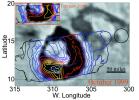
|
-
PIA02549:
-
Temperature Comparison at Loki
Full Resolution:
TIFF
(291.5 kB)
JPEG
(133.3 kB)
|

|
2007-04-02 |
Io
|
New Horizons
|
LORRI
|
500x256x1 |
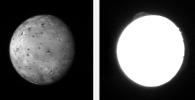
|
-
PIA09244:
-
An Eruption on Io
Full Resolution:
TIFF
(128.4 kB)
JPEG
(9.155 kB)
|

|
2007-04-02 |
Io
|
New Horizons
|
LORRI
|
420x420x1 |
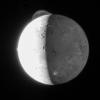
|
-
PIA09248:
-
Tvashtar's Plume
Full Resolution:
TIFF
(176.8 kB)
JPEG
(13.89 kB)
|

|
2007-10-09 |
Io
|
New Horizons
|
LORRI
Ultraviolet Light
|
504x720x3 |

|
-
PIA10101:
-
Tvashtar Montage
Full Resolution:
TIFF
(1.09 MB)
JPEG
(63.22 kB)
|

|
2013-07-02 |
ISON
|
Hubble Space Telescope
|
|
1008x935x3 |
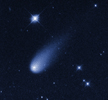
|
-
PIA17483:
-
Comet ISON Brings Holiday Fireworks

Full Resolution:
TIFF
(945.2 kB)
JPEG
(115.3 kB)
|

|
1998-09-15 |
J Rings
|
Galileo
|
Solid-State Imaging
|
2560x1920x3 |
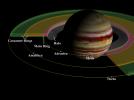
|
-
PIA01627:
-
Jupiter's Inner Satellites and Ring Components
Full Resolution:
TIFF
(2.915 MB)
JPEG
(196.2 kB)
|

|
1998-09-15 |
J Rings
|
Galileo
|
Solid-State Imaging
|
1800x2700x3 |

|
-
PIA01628:
-
Jupiter's Main and Gossamer Ring Structures
Full Resolution:
TIFF
(1.874 MB)
JPEG
(141.2 kB)
|

|
2007-04-02 |
J Rings
|
New Horizons
|
LORRI
|
835x626x1 |
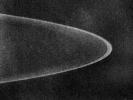
|
-
PIA09249:
-
Jupiter's Rings
Full Resolution:
TIFF
(523.5 kB)
JPEG
(106.2 kB)
|

|
1996-01-29 |
Jupiter
|
Galileo
|
Solid-State Imaging
|
1600x1250x1 |
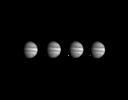
|
-
PIA00139:
-
Comet Shoemaker-Levy 9 Fragment W Impact With Jupiter
Full Resolution:
TIFF
(93.2 kB)
JPEG
(37.14 kB)
|

|
1997-09-23 |
Jupiter
|
Galileo
|
Solid-State Imaging
|
712x715x3 |
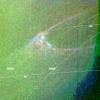
|
-
PIA00603:
-
False Color Aurora
Full Resolution:
TIFF
(1.705 MB)
JPEG
(98.67 kB)
|

|
1997-09-23 |
Jupiter
|
Galileo
|
Photopolarimeter Subsystem
|
807x700x3 |
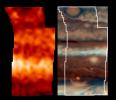
|
-
PIA00730:
-
Jupiter's Temperatures--Broad Latitude
Full Resolution:
TIFF
(1.011 MB)
JPEG
(42.99 kB)
|

|
1997-09-24 |
Jupiter
|
Galileo
|
Photopolarimeter Subsystem
|
585x376x3 |
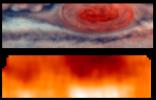
|
-
PIA00731:
-
Jovian Temperatures--Highest Resolution
Full Resolution:
TIFF
(447.1 kB)
JPEG
(17.9 kB)
|

|
1998-05-02 |
Jupiter
|
Hubble Space Telescope
|
WFPC2
|
795x900x3 |

|
-
PIA01254:
-
Hubble Provides Complete View of Jupiter's Auroras
Full Resolution:
TIFF
(1.387 MB)
JPEG
(114 kB)
|

|
1998-05-02 |
Jupiter
|
Hubble Space Telescope
|
WFPC2
|
1152x860x3 |
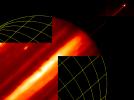
|
-
PIA01255:
-
Hubble Provides Infrared View of Jupiter's Moon, Ring, and Clouds
Full Resolution:
TIFF
(645.9 kB)
JPEG
(67.7 kB)
|

|
1998-05-02 |
Jupiter
|
Hubble Space Telescope
|
WFPC2
|
720x900x3 |

|
-
PIA01256:
-
Hubble Captures Volcanic Eruption Plume From Io
Full Resolution:
TIFF
(1.097 MB)
JPEG
(65.49 kB)
|

|
1998-05-02 |
Jupiter
|
Hubble Space Telescope
|
WFPC2
|
2069x2489x3 |

|
-
PIA01257:
-
Hubble Images Reveal Jupiter's Auroras
Full Resolution:
TIFF
(6.679 MB)
JPEG
(483.2 kB)
|

|
1998-05-02 |
Jupiter
|
Hubble Space Telescope
|
WFPC2
|
720x600x1 |
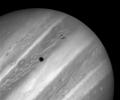
|
-
PIA01258:
-
Rare Hubble Portrait of Io and Jupiter
Full Resolution:
TIFF
(305.8 kB)
JPEG
(28.52 kB)
|

|
1998-05-02 |
Jupiter
|
Hubble Space Telescope
|
WFPC2
|
850x490x3 |
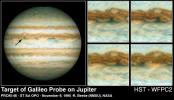
|
-
PIA01259:
-
Hubble Views the Galileo Probe Entry Site on Jupiter
Full Resolution:
TIFF
(993.4 kB)
JPEG
(64.05 kB)
|

|
1998-05-02 |
Jupiter
|
Hubble Space Telescope
|
WFPC2
|
800x600x3 |
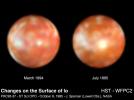
|
-
PIA01260:
-
Hubble Discovers Bright New Spot on Io
Full Resolution:
TIFF
(604.4 kB)
JPEG
(33.67 kB)
|

|
1998-05-02 |
Jupiter
|
Hubble Space Telescope
|
WFPC2
|
600x700x3 |

|
-
PIA01261:
-
Hubble Gallery of Jupiter's Galilean Satellites
Full Resolution:
TIFF
(527.3 kB)
JPEG
(44.81 kB)
|

|
1998-05-02 |
Jupiter
|
Hubble Space Telescope
|
WFPC2
|
800x800x3 |
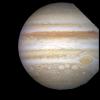
|
-
PIA01262:
-
Hubble Tracks Jupiter Storms
Full Resolution:
TIFF
(1.085 MB)
JPEG
(40.51 kB)
|

|
1998-05-02 |
Jupiter
|
Hubble Space Telescope
|
WFPC2
|
750x700x3 |
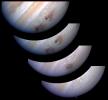
|
-
PIA01263:
-
Jupiter G Impact Evolution
Full Resolution:
TIFF
(752.8 kB)
JPEG
(31.92 kB)
|

|
1998-05-02 |
Jupiter
|
Hubble Space Telescope
|
WFPC2
|
830x568x3 |
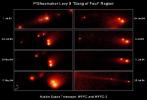
|
-
PIA01264:
-
Evolution of the P/Shoemaker-Levy 9 "Gang of Four" Region
Full Resolution:
TIFF
(543.5 kB)
JPEG
(69.45 kB)
|

|
1998-05-02 |
Jupiter
|
Hubble Space Telescope
|
WFPC2
|
800x600x1 |
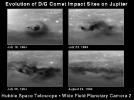
|
-
PIA01265:
-
Month-long Evolution of the D/G Jupiter Impact Sites from Comet P/Shoemaker-Levy 9
Full Resolution:
TIFF
(226.8 kB)
JPEG
(54.55 kB)
|

|
1998-05-02 |
Jupiter
|
Hubble Space Telescope
|
WFPC2
|
600x854x1 |

|
-
PIA01266:
-
Jupiter's Upper Atmospheric Winds Revealed in Ultraviolet Images by Hubble Telescope
Full Resolution:
TIFF
(239.6 kB)
JPEG
(62.37 kB)
|

|
1998-05-02 |
Jupiter
|
Hubble Space Telescope
|
WFPC2
|
800x600x3 |
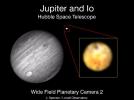
|
-
PIA01267:
-
Hubble Space Telescope Resolves Volcanoes on Io
Full Resolution:
TIFF
(357 kB)
JPEG
(40.59 kB)
|

|
1998-10-14 |
Jupiter
|
Galileo
Hubble Space Telescope
|
|
850x950x3 |

|
-
PIA01477:
-
Jupiter's White Ovals
Full Resolution:
TIFF
(648.3 kB)
JPEG
(32.09 kB)
|

|
1999-08-24 |
Jupiter
|
Hubble Space Telescope
|
WFPC2
|
2401x2870x3 |

|
-
PIA01593:
-
Hubble Views Ancient Storm in the Atmosphere of Jupiter - Montage
Full Resolution:
TIFF
(14.35 MB)
JPEG
(423.5 kB)
|

|
1999-08-24 |
Jupiter
|
Hubble Space Telescope
|
WFPC2
|
718x716x3 |
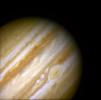
|
-
PIA01594:
-
Hubble Views Ancient Storm in the Atmosphere of Jupiter - Full Disk
Full Resolution:
TIFF
(1.127 MB)
JPEG
(30.32 kB)
|

|
1999-08-24 |
Jupiter
|
Hubble Space Telescope
|
WFPC2
|
321x321x3 |
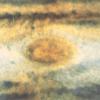
|
-
PIA01595:
-
Hubble Views Ancient Storm in the Atmosphere of Jupiter - May, 1992
Full Resolution:
TIFF
(306.5 kB)
JPEG
(13.83 kB)
|

|
1999-08-24 |
Jupiter
|
Hubble Space Telescope
|
WFPC2
|
321x321x3 |
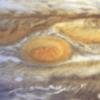
|
-
PIA01596:
-
Hubble Views Ancient Storm in the Atmosphere of Jupiter - July, 1994
Full Resolution:
TIFF
(301.3 kB)
JPEG
(12.4 kB)
|

|
1999-08-24 |
Jupiter
|
Hubble Space Telescope
|
WFPC2
|
321x321x3 |
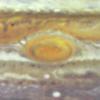
|
-
PIA01597:
-
Hubble Views Ancient Storm in the Atmosphere of Jupiter - August, 1994
Full Resolution:
TIFF
(285.2 kB)
JPEG
(10.9 kB)
|

|
1999-08-24 |
Jupiter
|
Hubble Space Telescope
|
WFPC2
|
321x321x3 |
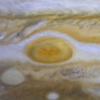
|
-
PIA01598:
-
Hubble Views Ancient Storm in the Atmosphere of Jupiter - February, 1995
Full Resolution:
TIFF
(218.9 kB)
JPEG
(9.833 kB)
|

|
1999-08-24 |
Jupiter
|
Hubble Space Telescope
|
WFPC2
|
321x321x3 |
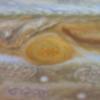
|
-
PIA01599:
-
Hubble Views Ancient Storm in the Atmosphere of Jupiter - October, 1995
Full Resolution:
TIFF
(245 kB)
JPEG
(9.032 kB)
|

|
1999-08-24 |
Jupiter
|
Hubble Space Telescope
|
WFPC2
|
321x321x3 |
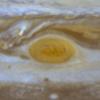
|
-
PIA02400:
-
Hubble Views Ancient Storm in the Atmosphere of Jupiter - October, 1996
Full Resolution:
TIFF
(219.7 kB)
JPEG
(9.823 kB)
|

|
1999-08-24 |
Jupiter
|
Hubble Space Telescope
|
WFPC2
|
321x321x3 |
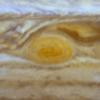
|
-
PIA02401:
-
Hubble Views Ancient Storm in the Atmosphere of Jupiter - April, 1997
Full Resolution:
TIFF
(217.3 kB)
JPEG
(10.36 kB)
|

|
1999-08-24 |
Jupiter
|
Hubble Space Telescope
|
WFPC2
|
321x321x3 |
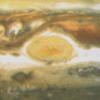
|
-
PIA02402:
-
Hubble Views Ancient Storm in the Atmosphere of Jupiter - June, 1999
Full Resolution:
TIFF
(258.3 kB)
JPEG
(11.79 kB)
|

|
2000-10-23 |
Jupiter
|
Hubble Space Telescope
|
WFPC2
|
693x485x1 |
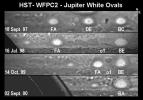
|
-
PIA02823:
-
Oval Storms Merging on Jupiter
Full Resolution:
TIFF
(223.6 kB)
JPEG
(43.14 kB)
|

|
2000-12-19 |
Jupiter
|
Cassini-Huygens
|
Imaging Science Subsystem
|
1001x888x3 |
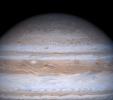
|
-
PIA02856:
-
High Latitude Mottling on Jupiter
Full Resolution:
TIFF
(2.031 MB)
JPEG
(119.8 kB)
|

|
2000-12-29 |
Jupiter
|
Cassini-Huygens
|
Imaging Science Subsystem
|
1027x924x1 |
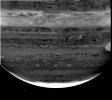
|
-
PIA02865:
-
Jupiter Clouds in Depth
Full Resolution:
TIFF
(742.9 kB)
JPEG
(135.7 kB)
|

|
2001-02-05 |
Jupiter
|
Cassini-Huygens
|
Imaging Science Subsystem
|
400x400x1 |
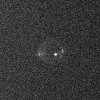
|
-
PIA02882:
-
Io in Eclipse, Movie

Full Resolution:
|

|
2001-07-21 |
Jupiter
|
Hubble Space Telescope
|
WFPC2
|
752x417x3 |

|
-
PIA03155:
-
Satellite Footprints Seen in Jupiter Aurora
Full Resolution:
TIFF
(202.4 kB)
JPEG
(34.06 kB)
|

|
2002-10-08 |
Jupiter
|
Galileo
Hubble Space Telescope
IRTF
|
WFPC2
|
650x300x3 |
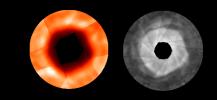
|
-
PIA03864:
-
Cold Hole Over Jupiter's Pole
Full Resolution:
TIFF
(176.2 kB)
JPEG
(15.88 kB)
|

|
2007-05-01 |
Jupiter
|
New Horizons
|
LORRI
|
962x682x3 |
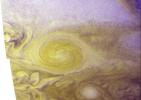
|
-
PIA09341:
-
Best Color Image of Jupiter's Little Red Spot
Full Resolution:
TIFF
(1.971 MB)
JPEG
(80.41 kB)
|

|
2008-01-25 |
Jupiter
|
Hubble Space Telescope
|
Visible Light
|
2000x2682x3 |

|
-
PIA10224:
-
Jupiter Eruptions
Full Resolution:
TIFF
(16.11 MB)
JPEG
(290.4 kB)
|

|
2010-03-16 |
Jupiter
|
Hubble Space Telescope
Spitzer Space Telescope
Very Large Space Telescope (VLT)
|
Hubble Space Telescope
VLT
|
469x566x3 |

|
-
PIA12869:
-
Jupiter's Storms: Temperatures and Cloud Colors
Full Resolution:
TIFF
(797.5 kB)
JPEG
(38.71 kB)
|

|
2011-01-26 |
Jupiter
|
IRTF
|
Visible Light Camera
Gemini North Telescope
Hubble Space Telescope
VLT
|
1202x1200x3 |
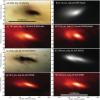
|
-
PIA13762:
-
Eight Looks at the Jupiter Impact
Full Resolution:
TIFF
(4.332 MB)
JPEG
(138.1 kB)
|

|
2011-03-31 |
Jupiter
|
Galileo
|
|
2610x4104x3 |

|
-
PIA13894:
-
Comet Impact Into Jupiter (Artist's Concept)
Full Resolution:
TIFF
(32.17 MB)
JPEG
(1.308 MB)
|

|
2013-04-23 |
Jupiter
|
Herschel Space Observatory
|
PACS
|
1765x1716x3 |
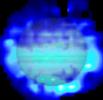
|
-
PIA17006:
-
Distribution of Water in Jupiter's Stratosphere
Full Resolution:
TIFF
(9.09 MB)
JPEG
(143.3 kB)
|

|
2013-04-23 |
Jupiter
|
Hubble Space Telescope
|
Hubble Space Telescope
|
1536x2048x3 |

|
-
PIA17007:
-
Comet Shoemaker-Levy 9 Approaching Jupiter in 1994
Full Resolution:
TIFF
(9.441 MB)
JPEG
(79.26 kB)
|

|
2015-10-13 |
Jupiter
|
Hubble Space Telescope
|
WFPC3
|
3600x1596x3 |
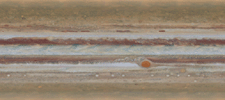
|
-
PIA19643:
-
Spinning Jupiter and Global Map

Full Resolution:
TIFF
(13.13 MB)
JPEG
(328.6 kB)
|

|
2015-10-13 |
Jupiter
|
Hubble Space Telescope
|
WFPC3
|
900x536x3 |
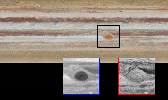
|
-
PIA19648:
-
New Changes in Jupiter's Great Red Spot

Full Resolution:
TIFF
(859.4 kB)
JPEG
(55.46 kB)
|

|
2015-10-13 |
Jupiter
|
Hubble Space Telescope
|
WFPC3
|
1798x446x3 |

|
-
PIA19659:
Jupiter Wave
Full Resolution:
TIFF
(2.407 MB)
JPEG
(52.69 kB)
|

|
2020-12-11 |
Jupiter
|
Juno
|
JunoCam
|
1374x773x3 |
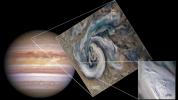
|
-
PIA24303:
-
Jupiter's Pop-up Clouds
Full Resolution:
TIFF
(2.126 MB)
JPEG
(102.3 kB)
|

|
2021-10-28 |
Jupiter
|
|
Hubble Space Telescope
Gemini North Telescope
|
766x696x3 |
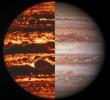
|
-
PIA24818:
-
Jupiter's Bands
Full Resolution:
TIFF
(1.385 MB)
JPEG
(59.74 kB)
|

|
2007-12-13 |
M51
|
Galaxy Evolution Explorer (GALEX)
Spitzer Space Telescope
|
IRAC
Ultraviolet/Visible Camera
|
1978x2850x3 |

|
-
PIA10200:
-
A Classic Beauty
Full Resolution:
TIFF
(16.93 MB)
JPEG
(526.5 kB)
|

|
1999-12-02 |
M82 Galaxy
|
Hubble Space Telescope
|
WFPC2
|
1487x1522x3 |

|
-
PIA04218:
-
Galaxy M82
Full Resolution:
TIFF
(5.39 MB)
JPEG
(187.4 kB)
|

|
2006-04-24 |
M82 Galaxy
|
Hubble Space Telescope
Spitzer Space Telescope
|
Chandra X-ray Telescope
Infrared Array Camera (IRAC)
Visible Light
|
640x480x3 |
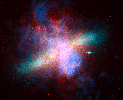
|
-
PIA08093:
-
Great Observatories Present Rainbow of a Galaxy

Full Resolution:
TIFF
(45.01 MB)
JPEG
(799.8 kB)
|

|
1997-07-04 |
Mars
|
Mars Global Surveyor (MGS)
|
Mars Orbiter Camera (MOC)
|
640x480x1 |
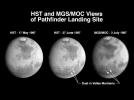
|
-
PIA00607:
-
Hubble and Mars Global Surveyor Views of Dust Storm on Mars
Full Resolution:
TIFF
(86.26 kB)
JPEG
(27.45 kB)
|

|
1997-09-10 |
Mars
|
Mars Global Surveyor (MGS)
|
Mars Orbiter Camera (MOC)
|
512x512x1 |
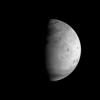
|
-
PIA00929:
-
MGS Approach Image - 172.4° W Longitude
Full Resolution:
TIFF
(42.96 kB)
JPEG
(8.111 kB)
|

|
1998-05-05 |
Mars
|
Hubble Space Telescope
|
WFPC2
|
400x200x3 |
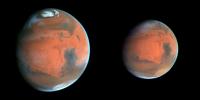
|
-
PIA01243:
-
Hubble Watches the Red Planet as Mars Global Surveyor Begins Aerobraking
Full Resolution:
TIFF
(116.9 kB)
JPEG
(7.111 kB)
|

|
1998-05-02 |
Mars
|
Hubble Space Telescope
|
WFPC2
|
2400x3000x3 |

|
-
PIA01244:
-
Decay of a Martian Dust Storm
Full Resolution:
TIFF
(11.14 MB)
JPEG
(411 kB)
|

|
1998-05-02 |
Mars
|
Hubble Space Telescope
|
WFPC2
|
2400x3000x3 |

|
-
PIA01245:
-
Hubble's Look at Mars Shows Canyon Dust Storm, Cloudy Conditions for Pathfinder Landing
Full Resolution:
TIFF
(9.466 MB)
JPEG
(377.4 kB)
|

|
1998-05-02 |
Mars
|
Hubble Space Telescope
|
WFPC2
|
3000x2400x3 |
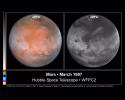
|
-
PIA01246:
-
Comparison View of Mars Cloud Cover
Full Resolution:
TIFF
(6.831 MB)
JPEG
(373.6 kB)
|

|
1998-05-02 |
Mars
|
Hubble Space Telescope
|
WFPC2
|
3000x2250x3 |
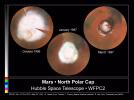
|
-
PIA01247:
-
Seasonal Changes in Mars' North Polar Ice Cap
Full Resolution:
TIFF
(6.358 MB)
JPEG
(308.6 kB)
|

|
1998-05-02 |
Mars
|
Hubble Space Telescope
|
WFPC2
|
2400x3000x3 |

|
-
PIA01248:
-
Four Views of Mars in Northern Summer
Full Resolution:
TIFF
(11.49 MB)
JPEG
(413.8 kB)
|

|
1998-05-02 |
Mars
|
Hubble Space Telescope
|
WFPC2
|
335x335x3 |
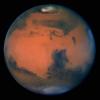
|
-
PIA01249:
-
Hubble's Sharpest View Of Mars
Full Resolution:
TIFF
(184.1 kB)
JPEG
(10.13 kB)
|

|
1998-05-02 |
Mars
|
Hubble Space Telescope
|
WFPC2
|
2850x2025x3 |
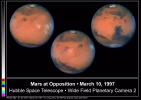
|
-
PIA01250:
-
Hubble Captures A Full Rotation Of Mars
Full Resolution:
TIFF
(6.68 MB)
JPEG
(337.5 kB)
|

|
1998-05-02 |
Mars
|
Hubble Space Telescope
|
WFPC2
|
2061x2701x3 |

|
-
PIA01251:
-
Springtime Dust Storm Swirls at Martian North Pole
Full Resolution:
TIFF
(6.992 MB)
JPEG
(317.1 kB)
|

|
1998-05-02 |
Mars
|
Hubble Space Telescope
|
WFPC2
|
800x525x3 |
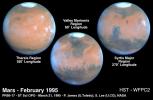
|
-
PIA01252:
-
Mars At Opposition
Full Resolution:
TIFF
(690.9 kB)
JPEG
(45.74 kB)
|

|
1998-05-02 |
Mars
|
Hubble Space Telescope
|
WFPC2
|
800x800x3 |
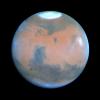
|
-
PIA01253:
-
Springtime on Mars: Hubble's Best View of the Red Planet
Full Resolution:
TIFF
(927.6 kB)
JPEG
(30.76 kB)
|

|
1999-05-21 |
Mars
|
Hubble Space Telescope
|
WFPC2
|
3000x1850x3 |
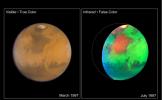
|
-
PIA01543:
-
Martian Colors Provide Clues About Martian Water
Full Resolution:
TIFF
(5.11 MB)
JPEG
(230.4 kB)
|

|
1999-05-21 |
Mars
|
Hubble Space Telescope
|
WFPC2
|
2827x1723x3 |
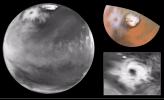
|
-
PIA01545:
-
Hubble Views Colossal Polar Cyclone on Mars
Full Resolution:
TIFF
(5.289 MB)
JPEG
(246.7 kB)
|

|
1999-08-23 |
Mars
|
Hubble Space Telescope
|
WFPC2
|
3001x2070x3 |
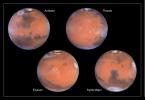
|
-
PIA01587:
-
A Closer Hubble Encounter With Mars - 4 Views
Full Resolution:
TIFF
(7.258 MB)
JPEG
(270.4 kB)
|

|
1999-08-23 |
Mars
|
Hubble Space Telescope
|
WFPC2
|
900x450x3 |
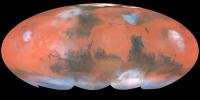
|
-
PIA01588:
-
A Closer Hubble Encounter With Mars - Global View
Full Resolution:
TIFF
(894 kB)
JPEG
(33.76 kB)
|

|
1999-08-23 |
Mars
|
Hubble Space Telescope
|
WFPC2
|
800x800x3 |
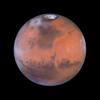
|
-
PIA01589:
-
A Closer Hubble Encounter With Mars - Pathfinder Landing Site
Full Resolution:
TIFF
(833.5 kB)
JPEG
(30.84 kB)
|

|
1999-08-23 |
Mars
|
Hubble Space Telescope
|
WFPC2
|
800x800x3 |
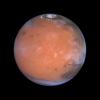
|
-
PIA01590:
-
A Closer Hubble Encounter With Mars - Tharsis
Full Resolution:
TIFF
(783.2 kB)
JPEG
(26.36 kB)
|

|
1999-08-23 |
Mars
|
Hubble Space Telescope
|
WFPC2
|
800x800x3 |
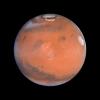
|
-
PIA01591:
-
A Closer Hubble Encounter With Mars - Elysium
Full Resolution:
TIFF
(743.6 kB)
JPEG
(26.86 kB)
|

|
1999-08-23 |
Mars
|
Hubble Space Telescope
|
WFPC2
|
800x800x3 |
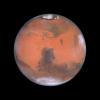
|
-
PIA01592:
-
A Closer Hubble Encounter With Mars - Syrtis Major
Full Resolution:
TIFF
(767.3 kB)
JPEG
(28.49 kB)
|

|
2001-07-21 |
Mars
|
Hubble Space Telescope
|
WFPC2
|
500x500x3 |
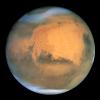
|
-
PIA03154:
-
Hubble Captures Best View of Mars Ever Obtained from Earth
Full Resolution:
TIFF
(463.3 kB)
JPEG
(17.85 kB)
|

|
2001-10-13 |
Mars
|
Hubble Space Telescope
|
WFPC2
|
2826x1677x3 |
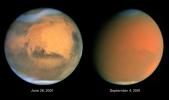
|
-
PIA03173:
-
Scientists Track "Perfect Storm" on Mars
Full Resolution:
TIFF
(7.452 MB)
JPEG
(168.7 kB)
|

|
2003-03-13 |
Mars
|
2001 Mars Odyssey
|
THEMIS
|
686x960x3 |

|
-
PIA04263:
-
Western Arcadia Planitia
Full Resolution:
TIFF
(1.554 MB)
JPEG
(55.23 kB)
|

|
2003-11-14 |
Mars
|
2001 Mars Odyssey
|
THEMIS
|
639x1171x3 |

|
-
PIA04872:
-
Mars in True Color (almost)
Full Resolution:
TIFF
(1.711 MB)
JPEG
(69 kB)
|

|
2004-01-28 |
Mars
|
Mars Exploration Rover (MER)
|
Panoramic Camera
|
5421x663x1 |

|
-
PIA05159:
Shades and Shapes of Mars
Full Resolution:
TIFF
(2.359 MB)
JPEG
(496.1 kB)
|

|
2004-06-10 |
Mars
|
2001 Mars Odyssey
|
THEMIS
|
734x1370x3 |

|
-
PIA06389:
-
Hebes Mensa
Full Resolution:
TIFF
(1.963 MB)
JPEG
(97.98 kB)
|

|
2004-12-13 |
Mars
|
Mars Exploration Rover (MER)
|
Panoramic Camera
|
3072x1422x1 |
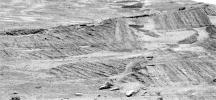
|
-
PIA07107:
-
Angled Layers in Super Resolution
Full Resolution:
TIFF
(4.374 MB)
JPEG
(805.2 kB)
|

|
2005-09-12 |
Mars
|
Mars Global Surveyor (MGS)
|
Mars Orbiter Camera (MOC)
|
967x979x3 |

|
-
PIA05079:
-
Celebrating 8 Years at Mars: Repeated Weather Events
Full Resolution:
TIFF
(2.844 MB)
JPEG
(123.5 kB)
|

|
2005-12-05 |
Mars
|
Mars Exploration Rover (MER)
|
Panoramic Camera
|
1024x1024x1 |
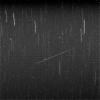
|
-
PIA03613:
-
Meteor Search by Spirit, Sol 643
Full Resolution:
TIFF
(1.05 MB)
JPEG
(329.8 kB)
|

|
2005-12-05 |
Mars
|
Mars Exploration Rover (MER)
|
Panoramic Camera
|
1024x1024x1 |
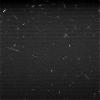
|
-
PIA03615:
-
Meteor Search by Spirit, Sol 668
Full Resolution:
TIFF
(1.05 MB)
JPEG
(308.9 kB)
|

|
2007-01-29 |
Mars
|
Mars Exploration Rover (MER)
|
Navigation Camera
|
512x512x10 |
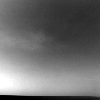
|
-
PIA09170:
-
Martian Clouds Pass By on a Winter Afternoon

Full Resolution:
TIFF
(262.6 kB)
JPEG
(10.83 kB)
|

|
2001-06-26 |
Mars
|
Hubble Space Telescope
|
|
500x500x3 |
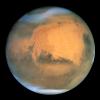
|
-
PIA18184:
-
Mars at 43 Million Miles From Earth
Full Resolution:
TIFF
(750.5 kB)
JPEG
(17.85 kB)
|

|
2014-10-23 |
Mars
|
Hubble Space Telescope
|
WFPC2
|
1167x876x3 |
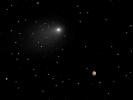
|
-
PIA17802:
-
Close Encounters: Comet Siding Spring Seen Next to Mars (Synthesized Image)
Full Resolution:
TIFF
(3.068 MB)
JPEG
(43.77 kB)
|

|
2017-07-20 |
Mars
|
Hubble Space Telescope
|
|
3000x2400x3 |
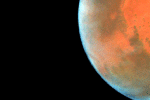
|
-
PIA21837:
-
NASA's Hubble Sees Martian Moon Orbiting the Red Planet

Full Resolution:
TIFF
(7.832 MB)
JPEG
(196.3 kB)
|

|
2017-08-09 |
Mars
|
Mars Science Laboratory (MSL)
|
Navcam (MSL)
|
511x511x1 |
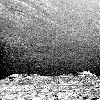
|
-
PIA21840:
-
Clouds Sailing Above Martian Horizon, Enhanced

Full Resolution:
TIFF
(261.6 kB)
JPEG
(89.02 kB)
|

|
2017-08-09 |
Mars
|
Mars Science Laboratory (MSL)
|
Navcam (MSL)
|
511x511x1 |
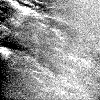
|
-
PIA21841:
-
Clouds Sailing Overhead on Mars, Enhanced

Full Resolution:
TIFF
(261.6 kB)
JPEG
(91.08 kB)
|

|
2017-08-09 |
Mars
|
Mars Science Laboratory (MSL)
|
Navcam (MSL)
|
511x510x1 |
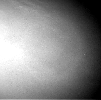
|
-
PIA21842:
-
Clouds Sailing Overhead on Mars, Unenhanced

Full Resolution:
TIFF
(261.1 kB)
JPEG
(15.55 kB)
|











































































































